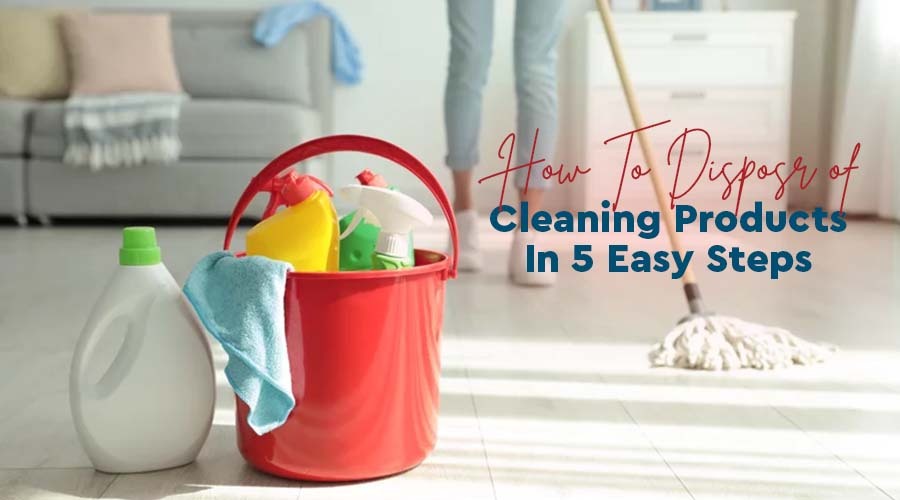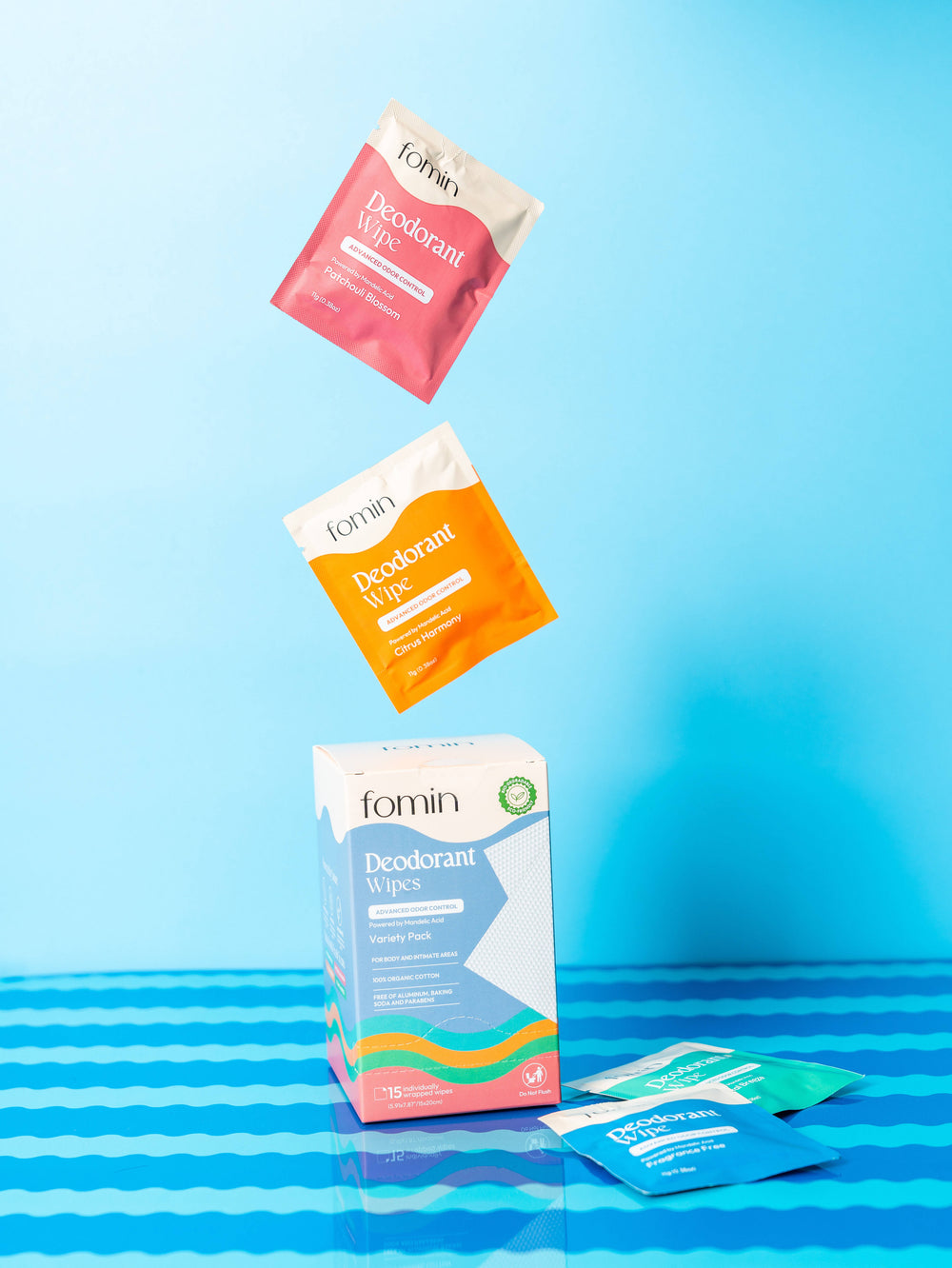
How To Dispose Of Cleaning Products In 5 Easy Steps
Share
Cleaning is a routine task in our daily lives, and many of us use a variety of cleaning products to maintain a clean and healthy environment. However, we often overlook the importance of disposing of these cleaning products safely. Incorrect disposal can harm the environment, wildlife, and even human health. In this article, we will explore easy and detailed steps to help you dispose of cleaning products safely.
Why Proper Disposal Matters?
Before we dive into the details of how to dispose of household cleaning products, it's crucial to understand why this matters. Many cleaning products contain chemicals that can be harmful to the environment and human health if not disposed of correctly. Here are a few reasons why proper disposal is essential:
- Environmental Impact: Improper disposal can lead to contamination of water sources, soil, and air, harming ecosystems and wildlife.
- Health Concerns: Toxic cleaning products can pose health risks if they are not disposed of properly, especially if they come into contact with the skin or are inhaled.
- Compliance with Regulations: Some cleaning products are regulated by laws that require specific disposal methods. Failure to comply can result in fines or legal consequences.
Experience the eco-friendly Bathroom Refill and multi-surface cleaners - each tablet delivers 17oz (500ml) of powerful cleaning spray, infused with invigorating scents like Lemon Zest and Magnolia Grapefruit.
How to Dispose of Cleaning Products Safely?

Now, let's explore the steps for disposing of old cleaning products in a way that's safe for you and the environment.
Step 1: Read the Label
Before you even think about disposal, start by reading the label on the cleaning product. Most cleaning products come with specific instructions on how to dispose of them safely. These instructions may include information about recycling, hazardous waste, or special disposal methods. Following the label's guidance is the first and most crucial step in ensuring safe disposal.
Step 2: Use It or Give It Away
One of the best ways to minimize waste is to use the cleaning product until it's completely empty. If you find that you have a partially used product you no longer need, consider giving it to a friend, family member, or neighbor who can make use of it. Reducing waste through reuse is an eco-friendly and practical approach.
Step 3: Pour Them Down the Drain (with Caution)
Many household cleaning products can be poured down the drain. However, it's important to do this with caution. Here's how:
- Check Local Regulations: First, check your local regulations. Some areas have restrictions on pouring chemicals down the drain. Ensure you're in compliance with your local laws.
- Dilution: If the label allows for pouring down the drain, dilute the cleaning product with plenty of water. This reduces the concentration of chemicals and minimizes their impact on the environment.
- Avoid Mixing: Never mix different cleaning products, as this can result in hazardous reactions. Always handle one product at a time.
- Rinse Thoroughly: After pouring the product down the drain, run water for a few minutes to ensure the product is thoroughly flushed from your pipes.
Worried about hygiene during your trips and outings? Explore our range of hand soap sheets, wipes, and eco-clean towels - your perfect companions for cleanliness on the go!
Step 4: Recycle Empty Containers
Most cleaning product containers are recyclable. Recycling is an eco-friendly way to dispose of the packaging. Here's how to recycle effectively:
- Rinse Containers: Make sure to rinse the containers thoroughly to remove any leftover product. This prevents contamination in the recycling process.
- Check Local Recycling Guidelines: Understand your local recycling guidelines. Some areas may have specific rules about recycling certain types of plastic or containers. What is PVA, and how does it impact the environment? Discover its ecological role and whether it's disposable.
- Remove Labels: Remove any paper or plastic labels from the containers. Labels can interfere with the recycling process.
Step 5: Take Extra Precautions
Some cleaning products require extra precautions due to their potentially hazardous nature. Here are some tips for handling these products:
- Wear Protective Gear: When dealing with harsh chemicals like drain cleaners, always wear protective gear, including gloves and eye protection.
- Ventilation: Ensure proper ventilation when using or disposing of strong cleaning products. Use them in well-ventilated areas to avoid inhaling fumes.
- Secure Storage: Store hazardous cleaning products out of reach of children and pets. Lock them in a cabinet if possible.
Recommended Guide: Can I Use a Bathroom Cleaner in the Kitchen?
What Are Expiration Dates For Cleaning & Laundry Products?

Understanding the expiration dates for cleaning and laundry products is essential to ensure their effectiveness and safety. Here are the recommended expiration dates for some common household products:
Air Fresheners
Air fresheners, both spray and solid forms, typically do not have a strict expiration date. However, their fragrance might weaken over time. For optimal scent, use within 1-2 years.
Chlorine Bleach
Unopened chlorine bleach has a shelf life of about one year. Once opened, it remains effective for about 6-12 months. After that, its disinfecting power diminishes.
Dish Soap
Dish soap doesn't have a strict expiration date. It remains effective for cleaning dishes for an extended period, often well over a year. Its scent and consistency may change over time, but it can still be used.
Fabric Softener
Fabric softeners typically have a shelf life of 1-2 years if unopened. Once opened, they remain effective for about 6 months to a year. Over time, they may thicken or change in consistency. Tired of lint all over your clothes? Learn how to remove lint like a pro with our step-by-step guide.
Laundry Detergents
Most laundry detergents have a shelf life of 6 months to 2 years. Powder detergents have a longer shelf life than liquid ones. However, their cleaning power can decline over time, so it's best to use them within the recommended time frame.
Metal Polish
Metal polish, like silver or brass polish, can last for several years if stored properly. Over time, it may separate or change in texture, but it remains usable.
Multi-Surface Cleaners
Multi-surface cleaners typically have a shelf life of 2-3 years. However, their effectiveness can decline over time. It's best to use them within the recommended timeframe for the best cleaning results.
Recommended Guide: Liquid Hand Wash Vs. Soap Bar Vs. Paper Soap - What is Better?
Oxygen Bleach Powder
Oxygen bleach, often used for laundry and as a household cleaner, can be effective for 6 months to 2 years, depending on the brand and storage conditions. Store it in a cool, dry place.
Stain Removers
Stain removers, such as spray or stick forms, usually remain effective for 1-2 years. Check the product label for specific recommendations.
Wood Polish
Wood polish typically has a shelf life of 2-3 years if stored in a cool, dry place. Over time, it may thicken or change in consistency, but it can still be used.
Note: It's important to note that while these are general guidelines, the actual expiration date can vary depending on the brand and specific product formulation. Always check the product label for manufacturer recommendations.
Embrace Clean and Eco-Friendly Living with Fomin: A Sustainable Choice

Fomin is your eco-conscious choice for clean living. Our cleaning products are entirely free from toxic chemicals, promoting a healthy environment. With every Fomin purchase, you prevent 12 ocean-bound plastic bottles from polluting our oceans. We are committed to sustainability, using 100% TUV Certified compostable packaging for all our products. Plastic pollution is at a crisis point, making eco-friendly choices more vital than ever. Fomin is here to help you protect our planet and secure a cleaner, healthier future. Make a positive impact with Fomin, embracing clean and toxin-free living with each purchase.
Conclusion
Knowing how to dispose of old cleaning products properly is essential for safeguarding both the environment and our health. By following these steps and adhering to the specific guidelines on product labels, you can ensure that your cleaning products are disposed of safely and responsibly. Remember that disposing of toxic cleaning products requires extra care and should always be done in compliance with local regulations. Your efforts in proper disposal contribute to a cleaner, safer world for us all.
Frequently Asked Questions
How to Dispose of Toxic Cleaning Products?
To dispose of toxic cleaning products, never pour them down the drain. Take them to a hazardous waste collection facility or follow specific disposal guidelines provided on the product labels.
How to Dispose of Cleaning Products?
Properly dispose of cleaning products by reading labels, using them up, giving them to someone who can use them, recycling empty containers, and following disposal guidelines for hazardous or toxic products, such as pesticides or bleach.
How to Properly Dispose of Unused Cleaning Products?
Properly dispose of unused cleaning products by first reading the labels for guidance. If it's safe, use them up. If not, consider giving them to someone who can use them or consult your local hazardous waste collection for safe disposal.


